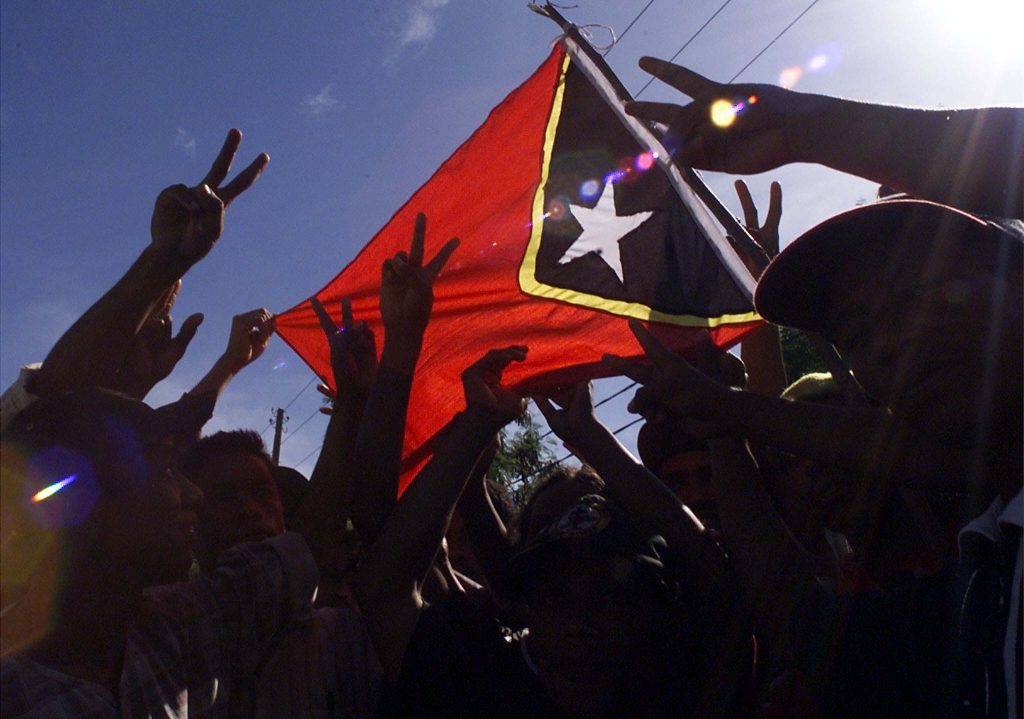The past year in Timor-Leste has been notable for two interrelated phenomena — the return of Xanana
Gusmao as Prime Minister of a coalition government and the belated tackling of a looming fiscal crisis.
Gusmao has been Timor-Leste’s dominant political persona since the years of the independence struggle. He once again stamped his authority on the country’s politics in 2022 and 2023. In 2022, Gusmao campaigned for Jose Ramos-Horta in the presidential elections, which saw him win with 62 per cent of the vote. In the May 2023 parliamentary elections, Gusmao’s party, the National Congress for Timorese Reconstruction, achieved its strongest ever political showing, with 41.7 per cent of the vote.
More positively, voter turn-out was a shade under 80 per cent, indicating continued popular support for electoral politics. The elections were widely considered to be well run, free and fair, as they have proven to be since independence in 2002.
Gusmao’s first and largest task upon becoming prime minister was to rein in government spending. Since 2007, spending has exceeded sustainable withdrawals from the country’s sovereign wealth fund — the Petroleum Fund. It started when Gusmao’s then-coalition government sought to address the material hardships that followed independence and the subsequent political crisis of 2006. But successive governments have continued to draw down on the Petroleum Fund’s capital rather than just draw from its interest, as was originally intended.
Capital withdrawals from the Petroleum Fund have since run at an average of 2.5 times sustainable withdrawals. Since 2007, government spending has driven around 85 per cent of the country’s otherwise weak and import-dependent economy.
The finite nature of withdrawals from the Petroleum Fund was first highlighted in 2012 but was ignored at the time. This was largely because Gusmao believed Timor-Leste could kick-start a petro-chemical industry by forcing the US$50 billion Greater Sunrise liquid natural gas field in the southern Timor Sea to be developed on-shore.
But Greater Sunrise development partner Woodside Petroleum baulked at the ambitious and arguably fanciful proposal. Woodside cited the lack of infrastructure and skills in Timor-Leste and the technical challenge of running a pipeline across the 3300-metre-deep Timor Trough at the cost of around US$16 billion. Despite Timor-Leste investing in some south coast infrastructure and buying a greater share of the Greater Sunrise field from other joint development partners, the plan has not progressed and the anticipated windfall has not materialised.
Timor-Leste is facing a ‘fiscal cliff’ due to the dwindling receipts from existing oil fields and the current rate of withdrawal from the sovereign wealth fund. The fund is expected to run dry by 2034.
In response, in 2023 the government started to cut spending and has reduced its 2024 budget by 18 per cent. A sustainable withdrawal from the now US$16 billion Petroleum Fund would have been US$490 million. The only other source of government revenue is US$115 million from taxes. Despite the proposed cut, with such limited sources of revenue, the budget remains ambitious.
Timor-Leste’s economy was expected to have grown by 2.4 per cent in 2023. But with government spending being cut by 18 per cent, Timor-Leste’s people look to be facing real economic hardship. Around 40 per cent of Timorese still live below the poverty line, while stunting due to malnutrition affects about half of all children. The steep budget cut, largely achieved through reducing the number of government employees, is just the start of the now required year-on-year cuts.
With continued cuts, the Petroleum Fund could last until 2044, or until 2049 with value-added and property taxes. Timor-Leste is also desperately seeking foreign investment to support its rudimentary economy.
This was the backdrop to Gusmao’s visit to China in September, where he signed a ‘comprehensive strategic partnership’ agreement. The agreement includes plans to ‘enhance high-level military exchanges, strengthen cooperation in areas such as personnel training, equipment technology, [and] the conduct of joint exercises and training’.
Due to elevated regional tensions, China publicly stepped back from the military side of the agreement. But there was little doubt that the agreement, which would see investment in Timor-Leste under the Belt and Road Initiative, will significantly expand China’s presence in the half island state.
China has previously provided Timor-Leste with patrol boats along with training and constructed the Timor-Leste Defence Force headquarters and barracks. It also built Timor-Leste’s foreign ministry building and Presidential Palace, financed the Suai Highway and Tibar deep seaport and operates its electricity grid.
The question will be whether China’s increased investment is sufficient to blunt the worst of the economic pain foreshadowed by the current and future budgets. While China is keen to have a greater presence in the strategically located country, there may be limits to how much it can invest in a country with almost no economy independent of the government. China has expressed a strong interest in Timor-Leste’s oil and gas sector but it too has stepped back from investing in the fraught Greater Sunrise project.
This leaves Timor-Leste staring down the barrel of swingeing economic cuts, greater poverty and, as in 2006, the potential for considerable civil unrest. Against the backdrop of expanded Chinese presence, the country’s political future is much less certain than the past decade and a half.
Damien Kingsbury is Emeritus Professor of the School of Humanities and Social Sciences at Deakin University.
This article is part of an EAF special feature serieson 2023 in review and the year ahead.


In Timor-Leste, Xanana Gusmao has recently returned as Prime Minister and is working to manage a fiscal crisis. For almost two decades, the nation's economy has largely relied on unsustainable withdrawals from the Petroleum Fund, which at pre-existing rates of expenditure was predicted to run out by 2034. Amid looming economic hardship, Gusmao has taken steps to reduce government spending, while also seeking foreign investment, including a strategic partnership with China. But the country’s future remains uncertain as it grapples with the possibility of increased poverty and potential civil unrest.